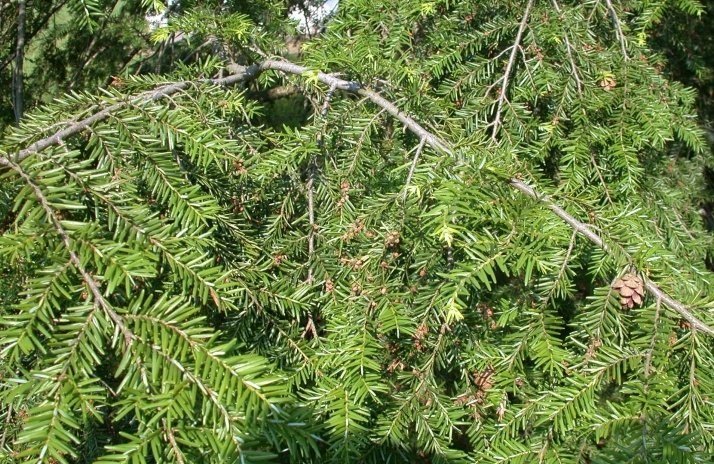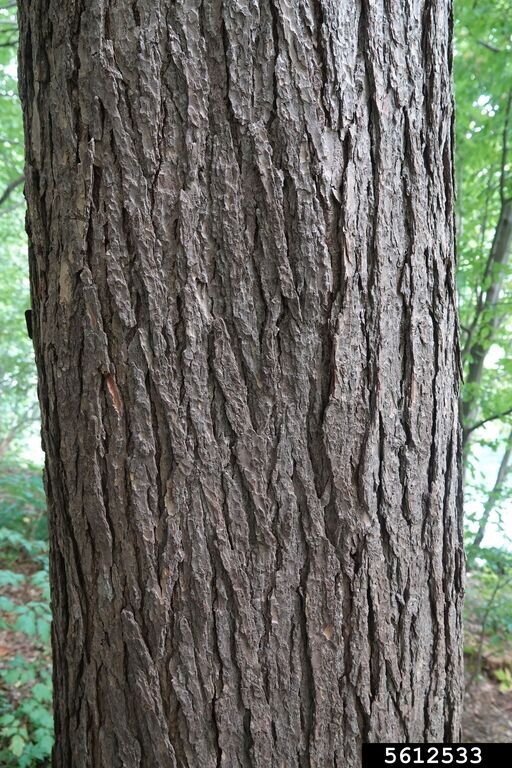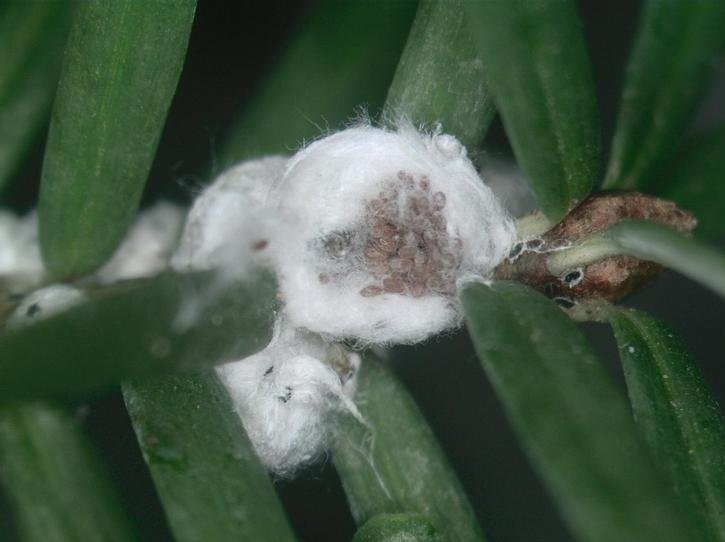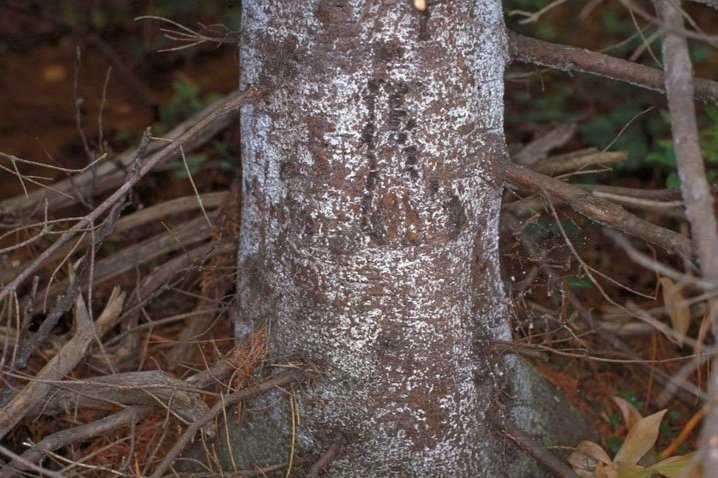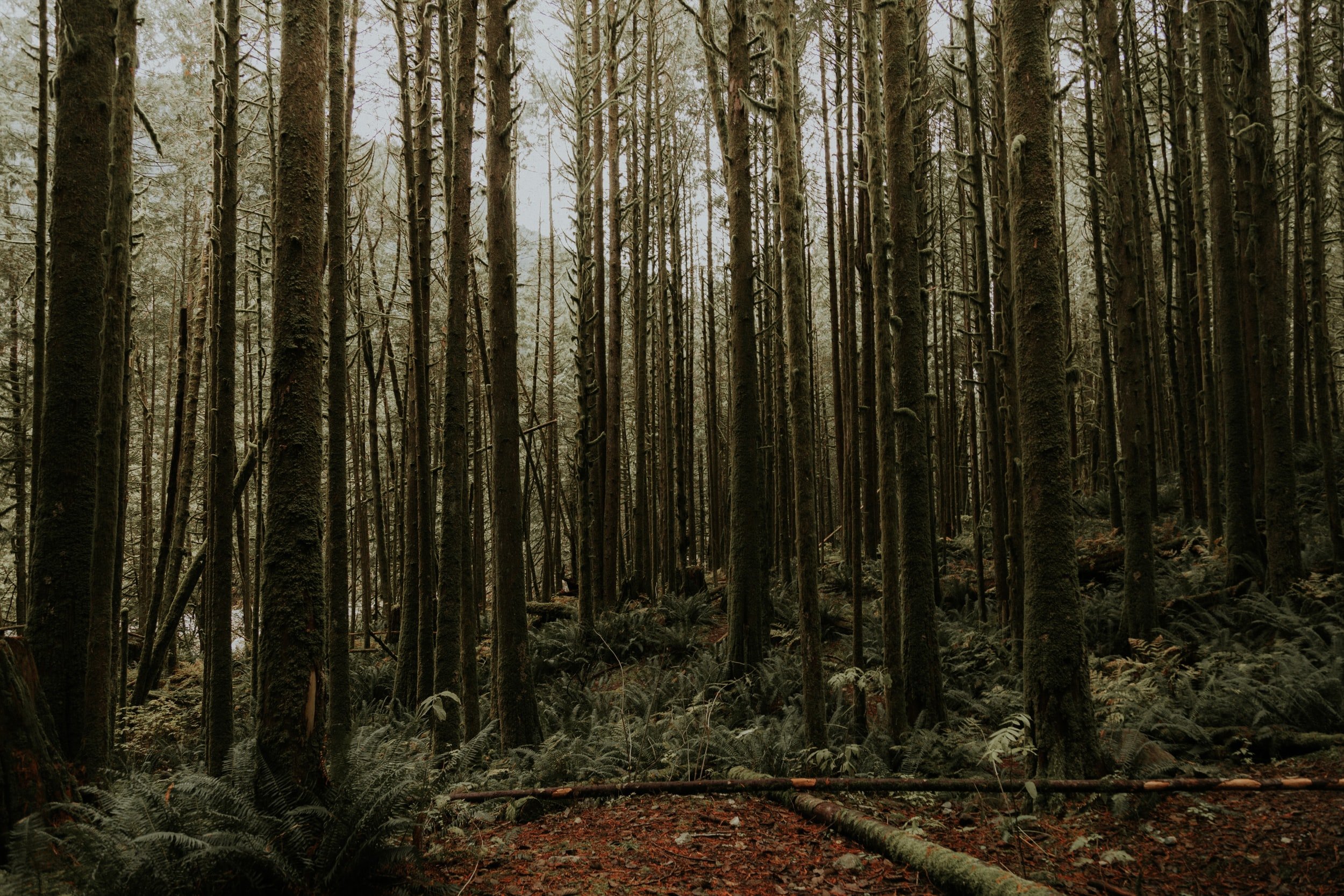
Invasive Species | Forest Pests
Hemlock Woolly Adelgid
Chris Evans, University of Illinois, Bugwood.org
Hemlock Woolly Adelgid
(Adelges tsugae)
French common name: Puceron lanigère de la pruche
Hemlock Woolly Adelgid (HWA) is an aphid-like insect that attacks Eastern Hemlock trees (Tsuga canadensis); it feeds on the base of hemlock needles, causing premature dieback, needle loss, foliage thinning, and tree death within 5-15 years. HWA is easily spread by the wind, birds, other wildlife, and by humans moving infested wood products.
Characteristics
Life cycle: All HWA are female and reproduce asexually. There are two generations throughout the year: one that overwinters and is present from early summer to mid-spring (sistens) and a spring generation present from March to April (progrediens). Each generation has 6 life stages: egg, mobile ‘crawlers’, 3 ‘settled’ nymphal instars and adults.
Host tree: Primarily Eastern Hemlock, a coniferous tree identifiable by its flat, short, and needle-like leaves that have two white stripes on the underside and are attached to the twig by a small stem.
Eggs: Clusters of amber-colored eggs (0.3-0.4mm) found in white woolly ovisacs that are slightly sticky; 75-300 eggs per sac.
Crawlers: Only mobile stage; brownish-orange in color and less than 0.5mm in size.
Additional Nymphal Stages & Adults: Very small (less than 1.5mm); black with heavy waxy coats and wingless. Found attached to the base of the needles. They stay in one spot for the rest of their lives, feeding on the sap of the tree.
John M. Randall, The Nature Conservancy, Bugwood.org
Bruce Watt, University of Maine, Bugwood.org
Eastern Hemlock Tree Identification
Type of tree: coniferous; has needles and cones rather than leaves; needles are present year-round
Needles: short (up to 1/2 inch long), flat, blunt-tipped, and bottom has two parallel white stripes underneath (sometimes called “racing stripes”). They are attached to the twig by a short stem and are usually arranged in flat rows along the twig.
Cones: small (up to 3/4 inch long), green to brown in color, delicate and papery. They hang downwards from the branches.
Bark: color varies from gray brown (young tree) to cinnamon brown (mature tree); texture ranges from smooth (young tree) to thick with ridges (mature tree).
Tree shape or silhouette: loosely coned-shaped, branches are described as dropping or feathery
Rob Routlede, Sault College, Bugwood.org
Keith Kanoti, Maine Forest Service, Bugwood.org
Pennsylvania Department of Conservation and Natural Resources - Forestry , Bugwood.org
Rebekah D. Wallace, University of Georgia, Bugwood.org
For more information about distinguing Eastern Hemlock trees from other tree species (Balsam Fir, Douglas Fir, Canada Yew), check out this resource (click here)
Signs of Infestation
Lorraine Graney, Bartlett Tree Experts, Bugwood.org
Woolly sacs at the base of needles
Chris Evans, University of Illinois, Bugwood.org
Needle loss and premature dieback of buds and shoots
Lorraine Graney, Bartlett Tree Experts, Bugwood.org
Clusters of amber-colored eggs
Common Look-a-Likes
Scott Tunnock, USDA Forest Service, Bugwood.org
Balsam Woolly Adelgid
Attacks stems and shoots of native Balsam Fir (Abies balsamea); weakens and kills trees however not as quickly or as extensively as HWA.
William M. Ciesla, Forest Health Management International, Bugwood.org
Spittlebugs
Small insects that excrete white foamy ‘spittle’ as they feed on a variety of plants.
Whitney Cranshaw, Colorado State University, Bugwood.org
Spider Egg Sacs
Woven silk sacs in varying sizes and shapes; located randomly on twigs and branches.






